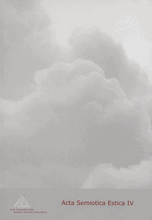Looduskirjanduse määratlus
Definition of nature writing
Author(s): Kadri TüürSubject(s): Semiotics / Semiology
Published by: Eesti Semiootika Selts
Keywords: nature writing; ecocriticism; genre; sub-literature; looduskirjandus; kirjandusökoloogia; žanr; allkirjandus
Summary/Abstract: In the literature-focused branch of ecocriticism, the notion ‘nature writing’ has been used as a term denoting texts that have been written in an essayistic prose form, that contain information on natural history, and that manifest the ethical beliefs of the authors as citizens in regard to the natural environment. Among those who study it, nature writing appears to be a clearly recognisable set of texts that has been composed according to certain generally accepted rules. Therefore, in the Anglo-American research tradition, nature writing is predominantly referred to as a ‘genre’. The main aim of the present article is to find out on the example of Estonian nature writing to what extent such texts share common formal features. Form is an important parameter of genre as it increases the automatism of the readers in the reception process, i.e., it increases the amount of information that is instantly received upon the recognition of a certain form. Historically, genre theory has been predominantly normative. Currently, genre is understood as a dynamic and dialogical phenomenon, the recognition of which relies on the expectations of the readers, on the established canon and the context of the cultural situation in general. Estonian nature writing can also be regarded as a sub-literature that proceeds parallel to the mainstream literature. In the article, formal features typical to the texts of Estonian nature writing have been specified. By grouping these, it becomes evident that the core of nature writing is formed in the intersection of the marginal areas of three lager realms – science writing, fiction, and commodity texts. By re-defining some peripheral phenomena, in the present case, texts representing nature, in regard to some new centre, in the present case, nature writing, they become more visible than before. At the same time, they inevitably lose some of their border-zone semiotic activity. Therefore, the model defining nature writing has to be featured in a dynamic manner, as a combination of several shifts, not as a ready-made framework.
Journal: Acta Semiotica Estica
- Issue Year: 2007
- Issue No: 4
- Page Range: 073-096
- Page Count: 24
- Language: Estonian

